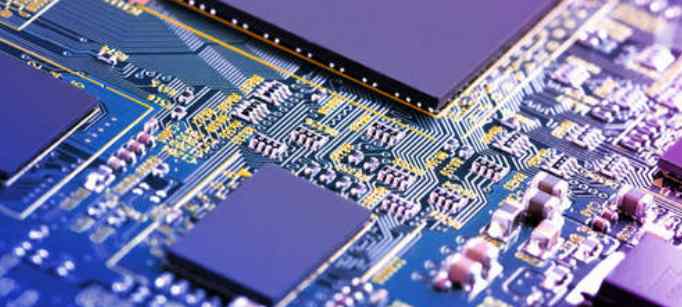
1. The power line layer of the four-layer board should be as close as possible to the ground line layer to obtain the minimum power impedance. From top to bottom, they are signal cables, ground cables, power cables, and signal cables. Considering electromagnetic compatibility, the six layer board from top to bottom is the best: signal wire, ground wire, signal wire, power cord, ground wire, signal wire;
2. The clock line should be adjacent to the ground line layer, and the line width should be increased as far as possible. The line width of each clock line should be the same;
3. High speed digital signal lines and low level analog signal lines are distributed in the signal layer adjacent to the ground wire, while low speed signal lines and high level analog signal lines are distributed in the far layer;
4, input and output wiring should be as far as possible to avoid adjacent parallel, to avoid feedback closing;
5, printed wire bend generally take 135 degrees obtuse Angle;
6. The wire width of power cord and ground wire should be increased as far as possible, and the wiring width of devices with 0.5mm foot spacing should not be less than 12mil;
7. General digital circuit signal line width is 8.il-10nul, spacing 6mi1-8mil;
8. The despoke capacitor lead can not be too long, especially the high-frequency bypass capacitor can not have a lead;
9, mixed signal circuit board on the digital and analog division, if the wiring across the division gap, electromagnetic radiation and signal interference will increase sharply, electromagnetic compatibility problems. Therefore, PCB design generally adopts unified, through the digital circuit and analog circuit zoning layout;
10, for some high-speed signals can use differential pair wiring, reduce electromagnetic radiation.
3 Test Examples
Here are some practical examples of disturbances caused by different causes and their practical solutions.
3.1 Interference Caused by power cables and ground Cables
Part of the circuit from an external high voltage control and protection PCB. (a) The original design circuit. Because the width of the printed wire of the power line and ground wire is too thin, the circuit is affected by external interference in the working situation; (b) is an improved circuit, whose power cord and ground wire are thickened to 5mm, which solves the interference problem of the circuit.

3.2 Interference caused by unreasonable component layout
Part of circuit obtained from a radar transmitter magnetic field control protection PCB. The improved PCB circuit (b) has a great improvement in anti-interference performance compared with the improved PCB circuit (a).
3.3 Interference caused by unreasonable wiring
The figure above is taken from part of the circuit of a radar CFA power control protection PCB. (a) The original design circuit. Because the high-voltage sampling signal line is placed in the closed-loop sampling loop during wiring, the closed-loop sampling circuit is susceptible to external interference during working, resulting in frequent false positive overvoltage failure. And (b) is the improved PCB circuit. Because it avoids the interference brought by the high-voltage sampling signal line, the improved PCB circuit works reliably and stably.
4 Conclusion
With the development of large-scale integrated circuit and super-large scale integrated circuit, the multilayer printed board (PCB) will be used more and more. In modern electronic systems, with the increase of clock frequency and chip integration, the rationality and reliability of PCB design are becoming more and more important. In the design, specific problems need to be analyzed in order to obtain high quality PCB design.
11. Requirements for the depth of the plug hole
Benefits: High quality plugs will reduce the risk of failure during assembly.
Risk of not doing so: Chemical residue from the gold settling process can remain in the hole where the plug is not sufficient, causing problems such as solderability. Moreover, tin beads may be hidden in the hole, which may splash out during assembly or actual use, causing a short circuit.
12. PetersSD2955 specifies the brand and model of peelable blue glue
Benefits: The designation of peelable blue glue avoids the use of "local" or cheap brands.
Risks of not doing this: Poor quality or cheap peelable glue may bubble, melt, crack, or set like concrete during assembly, making the peelable glue unpeeled/ineffective.
13. NCAB implements specific approval and placing procedures for each purchase order
Benefit: This procedure is performed to ensure that all specifications have been confirmed.
Risk of not doing so: If product specifications are not carefully confirmed, the resulting deviation may not be discovered until assembly or the final product, when it is too late.
14. Sleeve plate with scrap unit is not accepted
Benefits: Not using partial assembly helps customers improve efficiency.
Risks of not doing so: Defective sheeting requires special assembly procedures, and if the end-of-life unit board (x-out) is not clearly marked, or it is not isolated from the sheeting, the known defective board may be assembled, wasting parts and time







